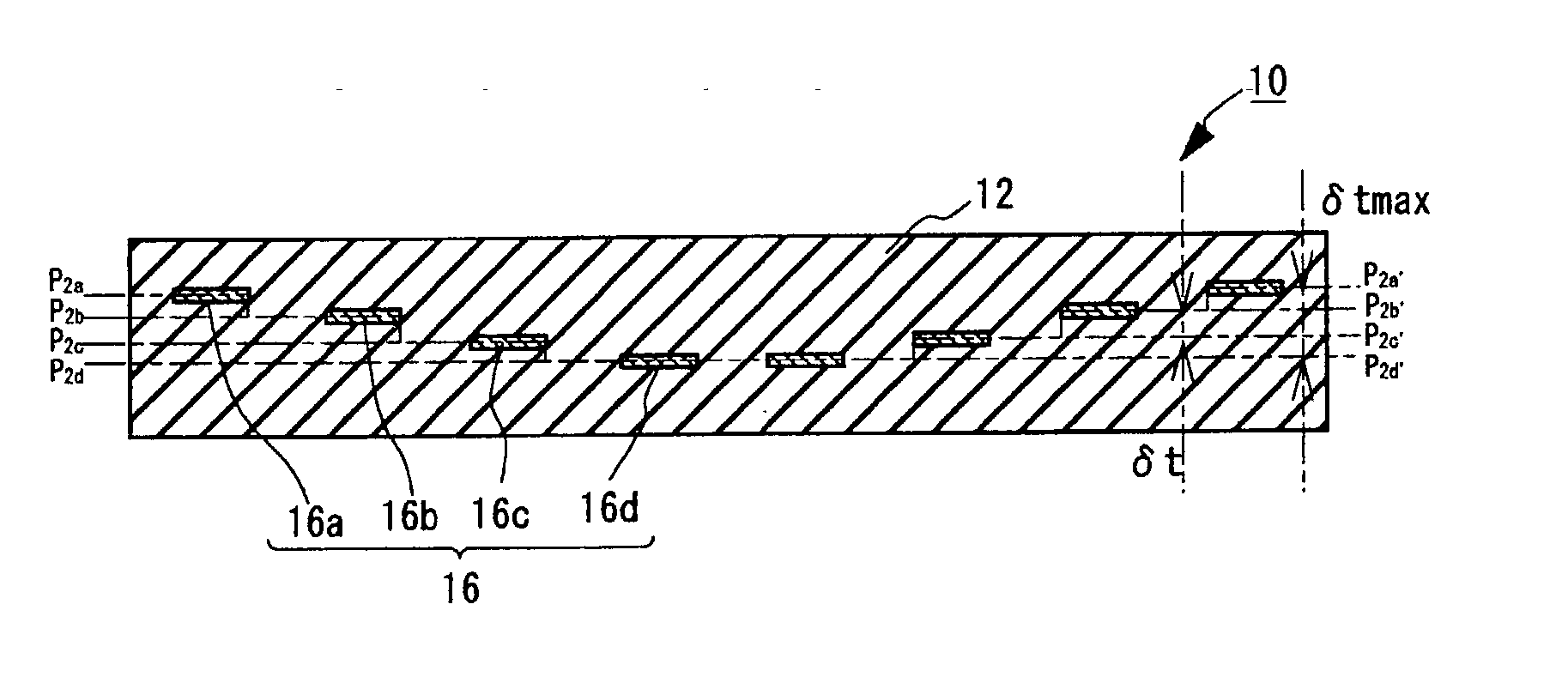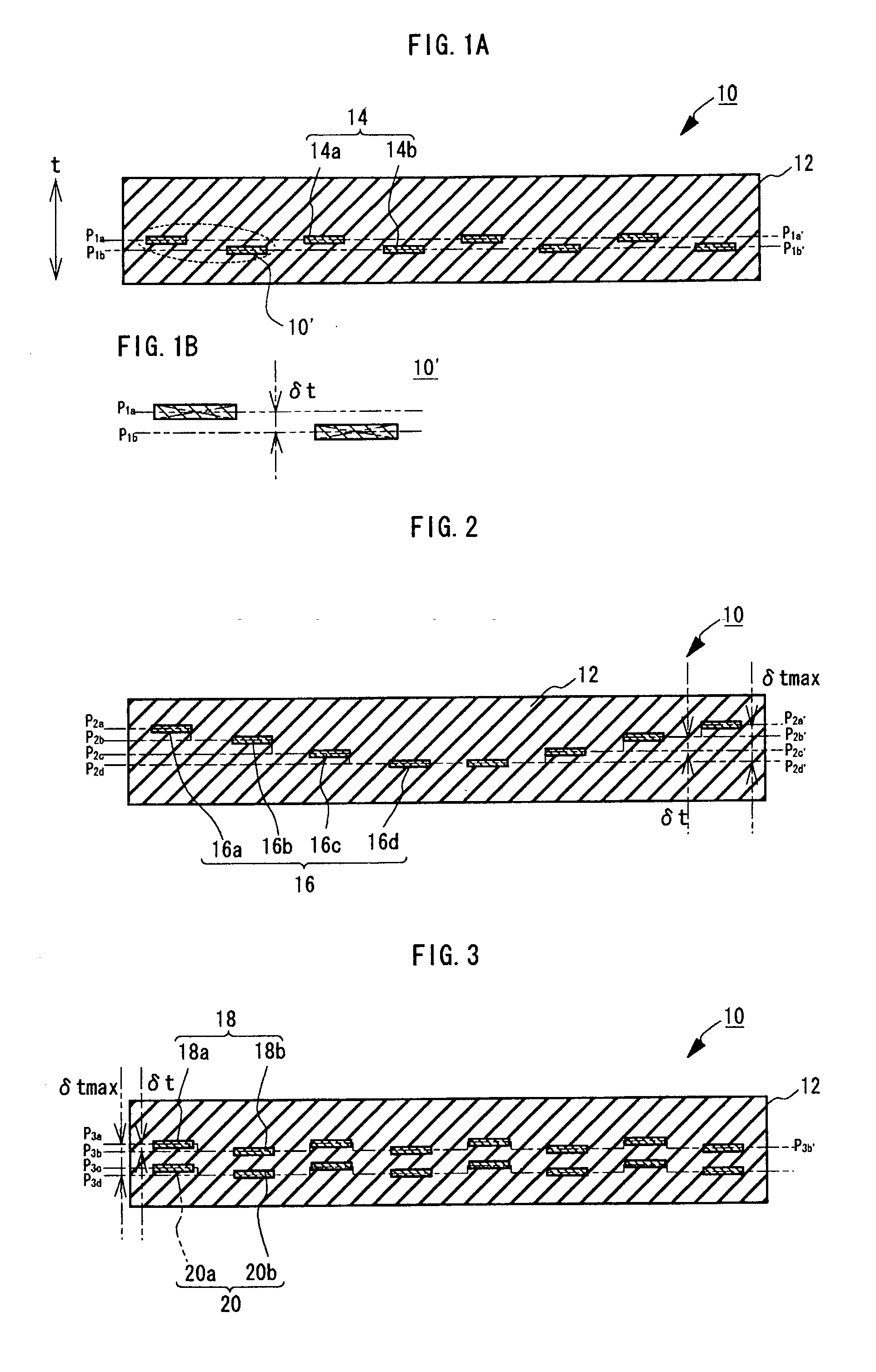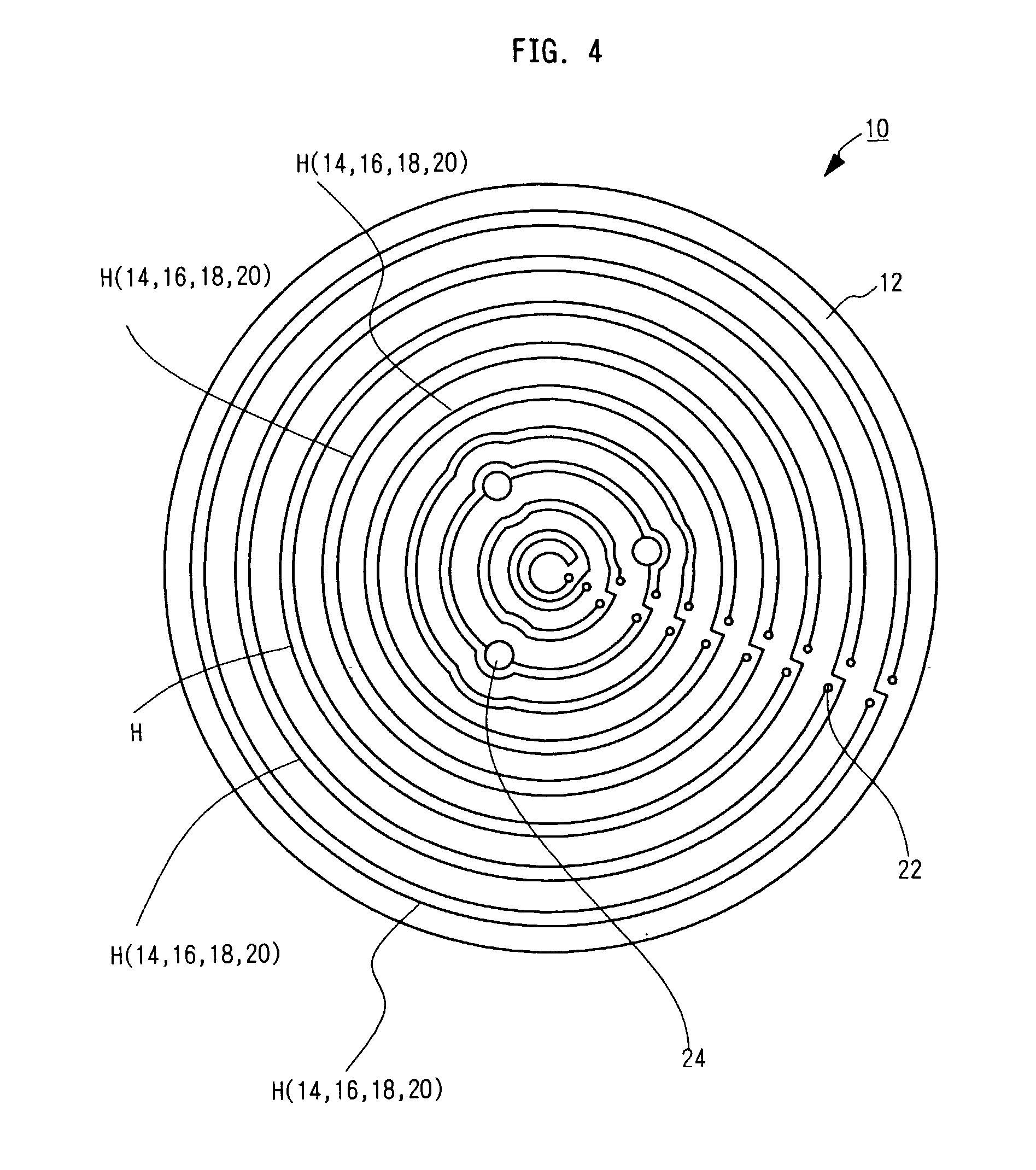Ceramic heater
a ceramic heater and ceramic plate technology, applied in the field of ceramic plates, can solve the problems of thermal shock applied to the ceramic plate, the .delta.t of the ceramic plate may decrease to approximately 150.degree. c, and the prior art may suffer, so as to achieve good repeatability and increase the amount of positional offset
- Summary
- Abstract
- Description
- Claims
- Application Information
AI Technical Summary
Benefits of technology
Problems solved by technology
Method used
Image
Examples
example 1
[0090] (1) A ceramic paste composition (viscosity 100 Pa.multidot.s) was made by mixing 100 parts by weight of powdered aluminum nitride (available from Tokuyama Corp., mean particle diameter 1.1 .mu.m), 4 parts by weight of yttrium (mean particle diameter 0.4 .mu.m), 11.5 parts by weight of acrylic binder, 0.5 part by weight of dispersant, and 53 parts by weight of alcohol mixture containing 1-butanol and ethanol. By means of doctor blade method, sheet formation was made from the paste on a base film comprised of PET and the like to obtain a green sheet of thickness of 0.47 mm. Some openings for making through holes were punched out at predetermined positions on the green sheet.
[0091] (2) A conductive paste composition A was prepared by mixing 100 parts by weight of tungsten carbide having mean particle diameter of 1 .mu.m, 3.0 parts by weight of acrylic binder, 3.5 parts by weight of .alpha.-terpineol solvent, and 0.3 part by weight of dispersant.
[0092] Also, a conductive paste B ...
example 2
[0098] (1) A ceramic paste composition (viscosity 100 Pa.multidot.s) was made by mixing 100 parts by weight of powdered aluminum nitride (available from Tokuyama Corp., mean particle diameter 1.1 .mu.m), 4 parts by weight of yttrium (mean particle diameter 0.4 .mu.m), 11.5 parts by weight of acrylic binder, 0.5 part by weight of dispersant, and 53 parts by weight of alcohol mixture containing 1-butanol and ethanol. By means of doctor blade method, sheet formation was made from the paste on a base film comprised of PET and the like to obtain a green sheet of thickness of 0.47 mm. Some openings for making through holes were punched out at predetermined positions on the green sheet.
[0099] (2) A conductive paste composition A was prepared by mixing 100 parts by weight of tungsten carbide having mean particle diameter of 1 .mu.m, 3.0 parts by weight of acrylic binder, 3.5 parts by weight of .alpha.-terpineol solvent, and 0.3 parts by weight of dispersant.
[0100] Also, a conductive paste B...
example 3
[0103] (1) 100 parts by weight of powdered aluminum nitride (available from Tokuyama Corp., mean particle diameter 1.1 .mu.m), 4 parts by weight of yttrium (mean particle diameter 0.4 .mu.m ), 11.5 parts by weight of acrylic binder were housed in a mold to pressurize at 14.7 MPa.multidot.s (150 kg / cm.sup.2) to obtain a green body of thickness 7 mm.
[0104] (2) The surface of green body was spot faced by means of a bit of diameter 2.5 mm to form spiral groove. One green body was spot faced in depths of 0.5 mm and 1.7 mm for every two rounds, another was spot faced in depths of 0.5 mm and 0.75 mm for every two rounds, so that the cross-section became a hatch.
[0105] (3) A tungsten wire was wound spirally. heat generation body having cross-section of 2.5 mm by 0.5 mm was disposed along with the groove. A mixture of 100 parts by weight of powdered aluminum nitride (available from Tokuyama Corp., mean particle diameter 1.1 .mu.m), 4 parts by weight of yttrium (mean particle diameter 0.4 .mu...
PUM
| Property | Measurement | Unit |
|---|---|---|
| temperature | aaaaa | aaaaa |
| temperature | aaaaa | aaaaa |
| thickness | aaaaa | aaaaa |
Abstract
Description
Claims
Application Information
 Login to View More
Login to View More - R&D
- Intellectual Property
- Life Sciences
- Materials
- Tech Scout
- Unparalleled Data Quality
- Higher Quality Content
- 60% Fewer Hallucinations
Browse by: Latest US Patents, China's latest patents, Technical Efficacy Thesaurus, Application Domain, Technology Topic, Popular Technical Reports.
© 2025 PatSnap. All rights reserved.Legal|Privacy policy|Modern Slavery Act Transparency Statement|Sitemap|About US| Contact US: help@patsnap.com



